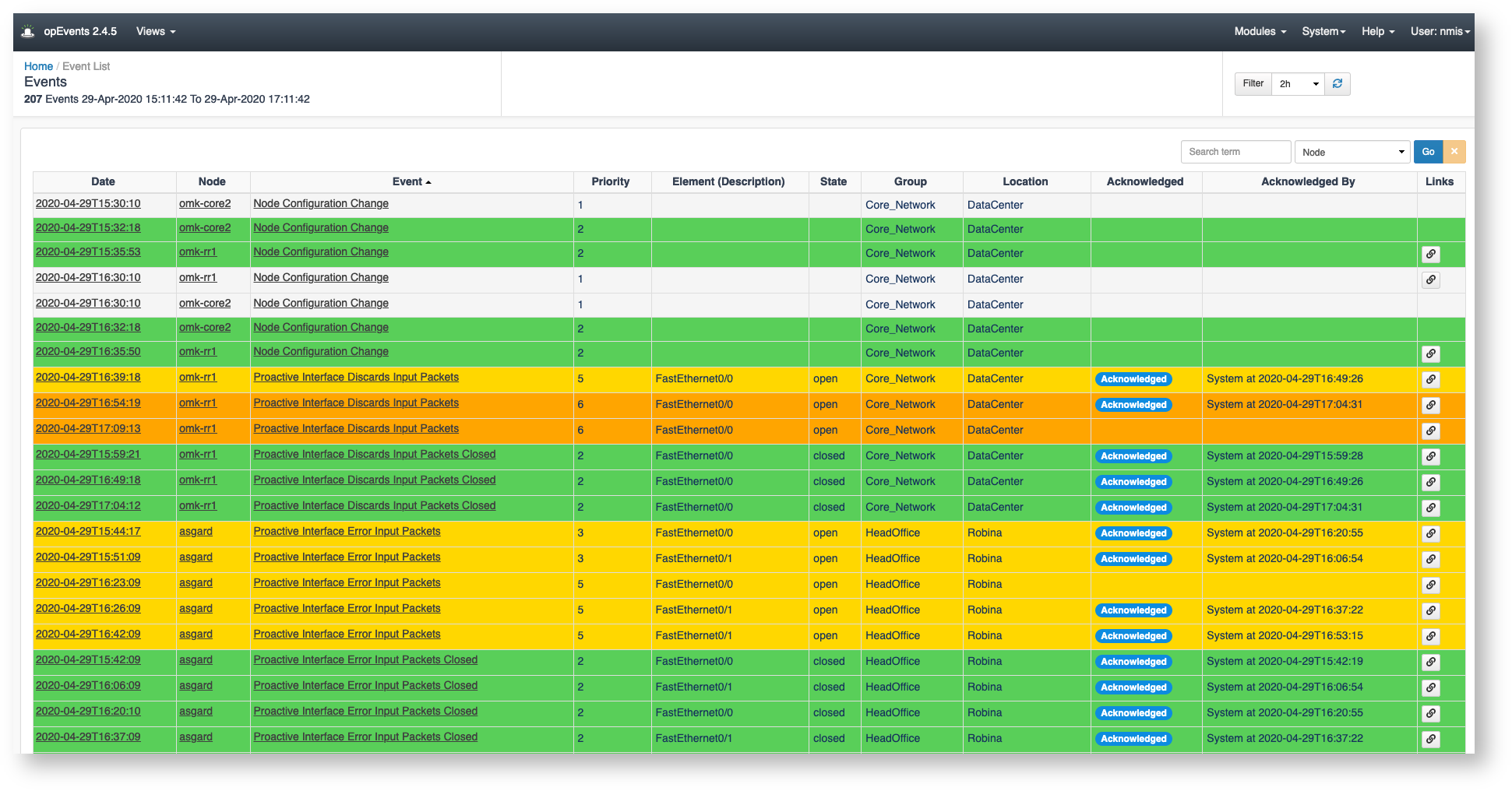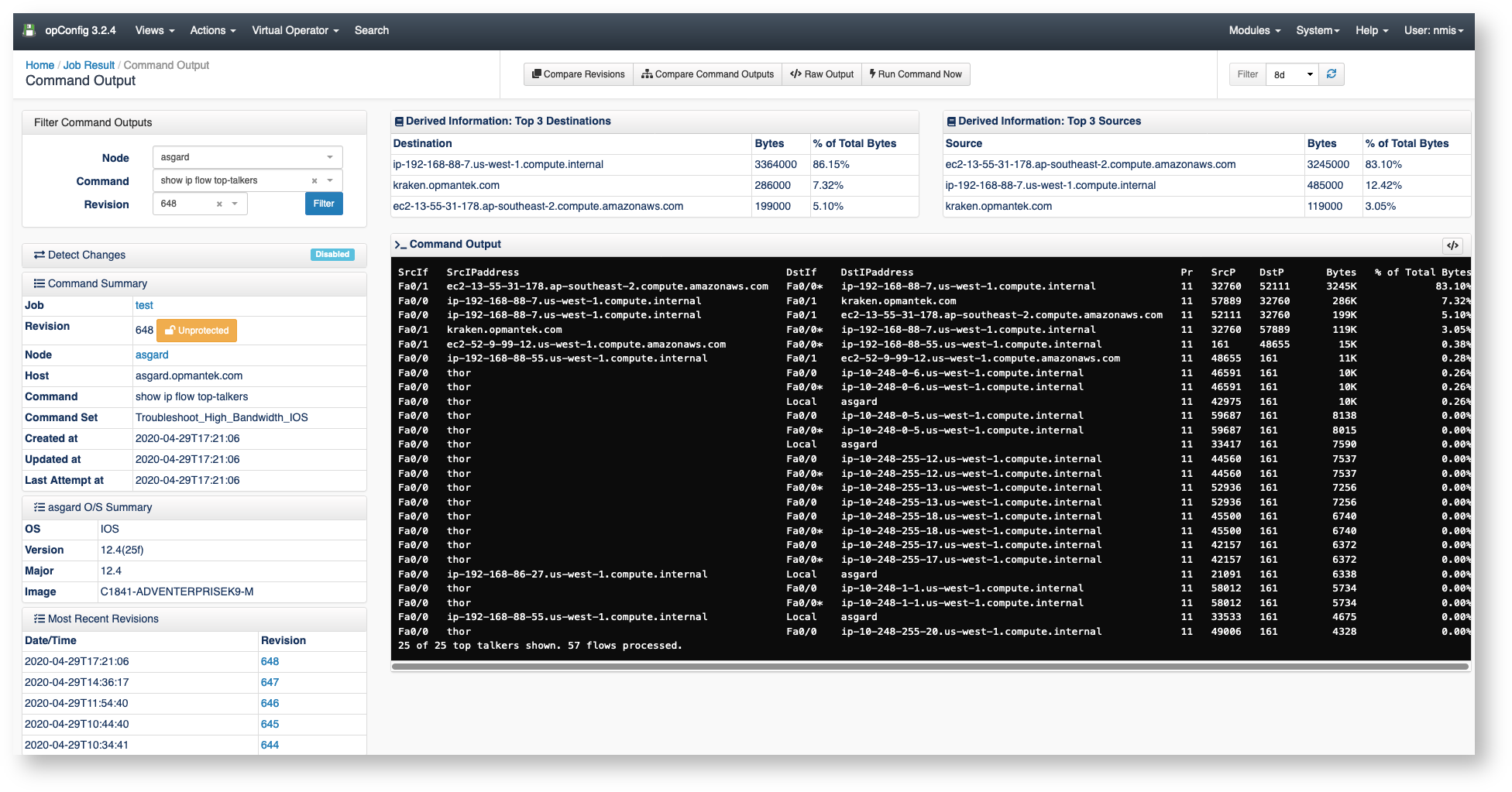Thought process
opEvents ships with a lot of features but what it ships with is not all that it can do. Opmantek's various modules are meant to be tinkered with to give you a product that works specifically for you. With a little thought and planning you and your team can make opCharts and other Opmantek modules act as if they were made custom for your organization.
So opEvents is set up and running and you are able to see every event that is occurring. You are happy knowing any time an event pops up you can clearly see it as well as dig into the event details however, there is still work to be done once the event occurs. You notice one event in particular keeps displaying in the event list. Every time this event shows up you keep having to run the same few commands to troubleshoot and resolve the issue. Ask yourself, "How can I bridge the gap from where our process is now to leveraging the tools I have to get to where I want to be?". You remember that opConfig can run commands automatically and you begin brainstorming on how you can get these modules to do the work so you or your team don't have to.
Basic event automation
Event automation can be completed in four steps:
- Identify the top network events you respond to frequently (daily, weekly, etc.)
- List the steps you take to troubleshoot and remediate when the issue occurs.
- Identify how these steps can be automated.
- Create an action to respond to the event.
Step 1: Identify top network events you respond to frequently.
Gather up a group of your architects, NOC engineers, customer service representatives, etc. and list the top 3-4 issues that each group deals with commonly.
You may already have an idea of what network events you and your team respond to frequently but should you need a little help you can take a look at the Events view in opEvents.
More information on opEvents and its features can be found HERE
Step 2: List the steps taken to troubleshoot and remediate issues.
From the list of top network events gathered in step 1 figure out what are the steps your team typically takes to troubleshoot these events.
Step 3: Identify how these steps can be automated.
With the information from step 1 and step 2 you can then figure out how to automate these actions by leveraging the tools you have in your Opmantek arsenal.
Step 4: Create an action to respond to the event.
notes ignore not part of the page:
power point slides step 1 do this step 2 do that.
asgard link in edit node - /omk/opCharts/nodes/$node_name/resources/interface creates a link
create a page, start with outline, ask why is this important. Why does customer care? How can bridge gap from where they are now to great things. four step process in the videos. start by identifying a simple event you deal with often and what are steps engineer takes to troubleshoot it and what are steps to fix it and how can automate steps to troubleshoot. focus on idea on troubleshooting then remediation.
opevents, event actions. dual purpose for events and config possibly. dont get into building an event action, theory of troubleshooting steps I want to take to create event actions. what commands want to run on devices.
how do a understand wha commands are htere now b identify what things they want to collect in their environment. might ship with mtr as a command but dont want to use that one. customize it to your needs.

